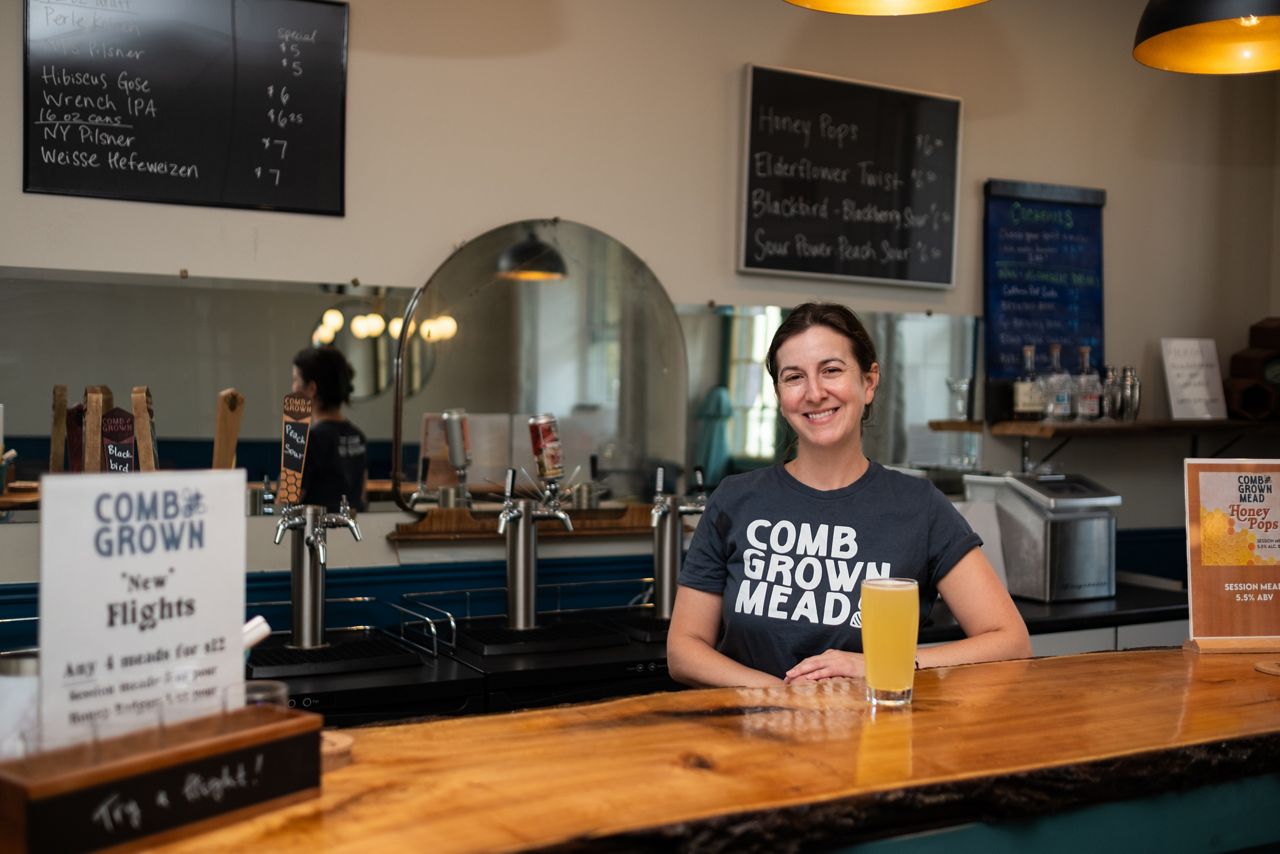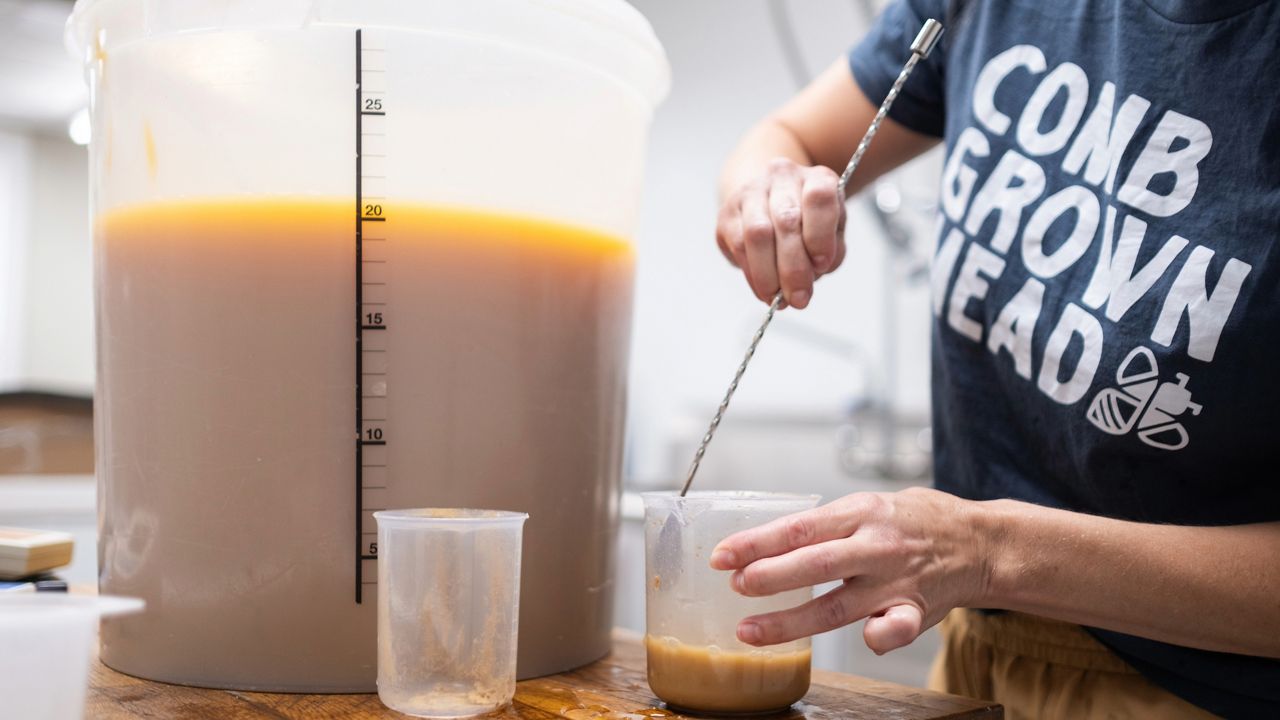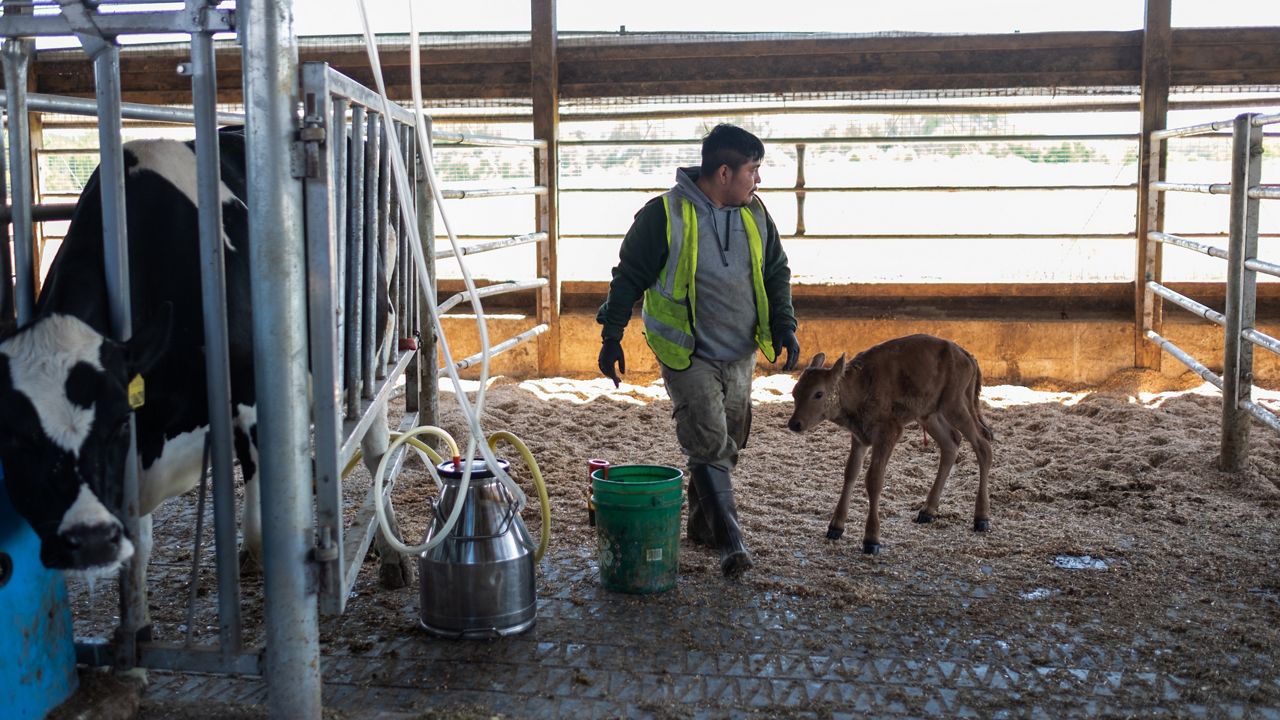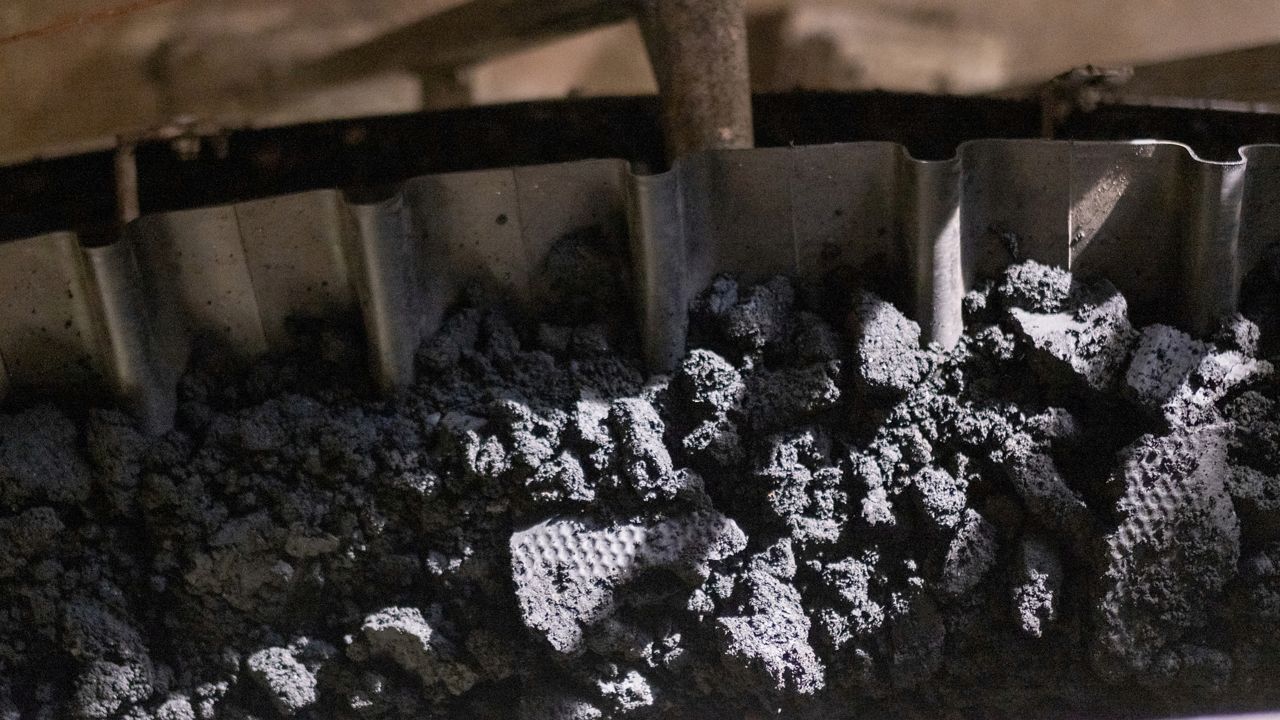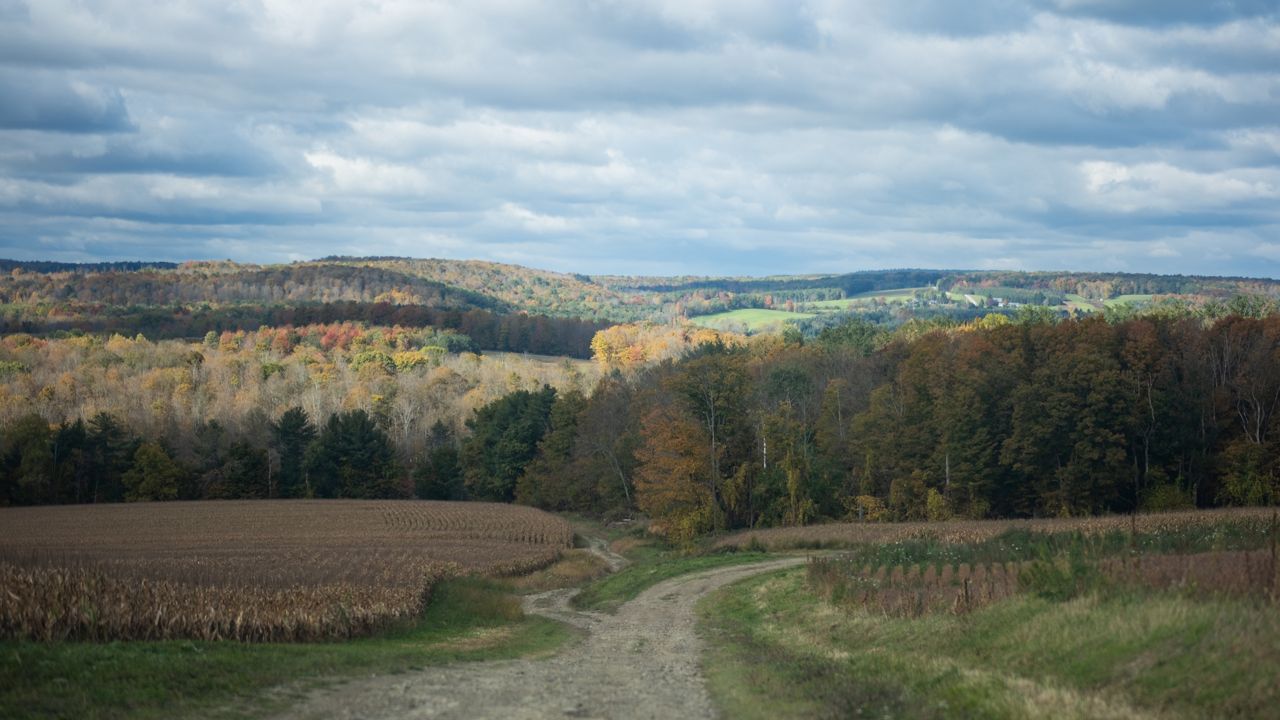Upstate New York has well-established craft beverages with hard cider, Finger Lakes wine and a variety of beers, but a local entrepreneur has taken to a different alcoholic drink.
Elaine Ferrier, owner of Combgrown Mead in Auburn, began fermenting honey in her home before deciding to turn it into a business.
“I couldn’t find the style of mead that I really wanted to drink myself out on the market, so I started experimenting,” Ferrier said.
She originally began her mead business in Canada, but when her family moved to Auburn, the chance to expand came up.
“It was an opportunity to get a brick-and-mortar and really try to find a space within the agritourism economy in this area,” she said. “There’s some really fantastic wineries and breweries, and there’s a couple meaderies but nothing super local.”
Traditionally, mead is a wine made from fermenting honey, but the style of mead Ferrier makes is more comparable to hard cider or craft beer with its lower alcohol content that makes it easier to drink with the same taste.
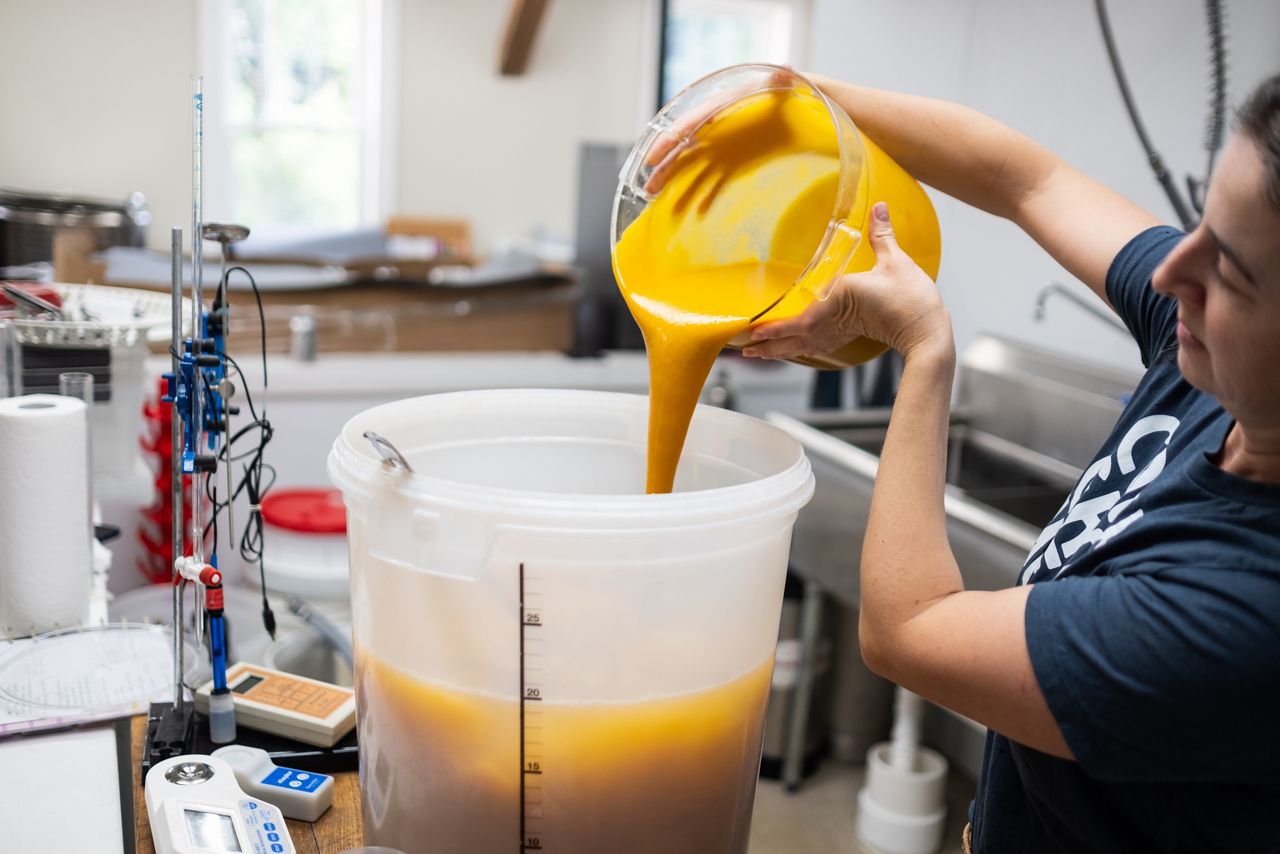
Mead with a higher alcohol content is made by first dissolving a higher concentration of honey with water.
“It’s often made to max out the amount of alcohol that yeast can make — that can be as high as 19% and it’s often quite sweet— but our modern tastes are looking for something that’s more sessionable,” she said.
More honey can be added after the fermentation process to make a sweeter mead, referred to as back sweetening. Ferrier makes flavored meads including peach sour, blackberry, elderflower, apple and strawberry rosé, which all require an extra step.
“If there’s a fruit, I add a little bit at the beginning and then some of it partway through the fermentation process,” she said.
Honey doesn’t like to ferment on its own, so Ferrier adds an additional ingredient to boost the fermentation process.
“I use an organic nutrient to help keep nudging the yeast along, so there’s some babysitting of the batches while it’s fermenting,” Ferrier said.
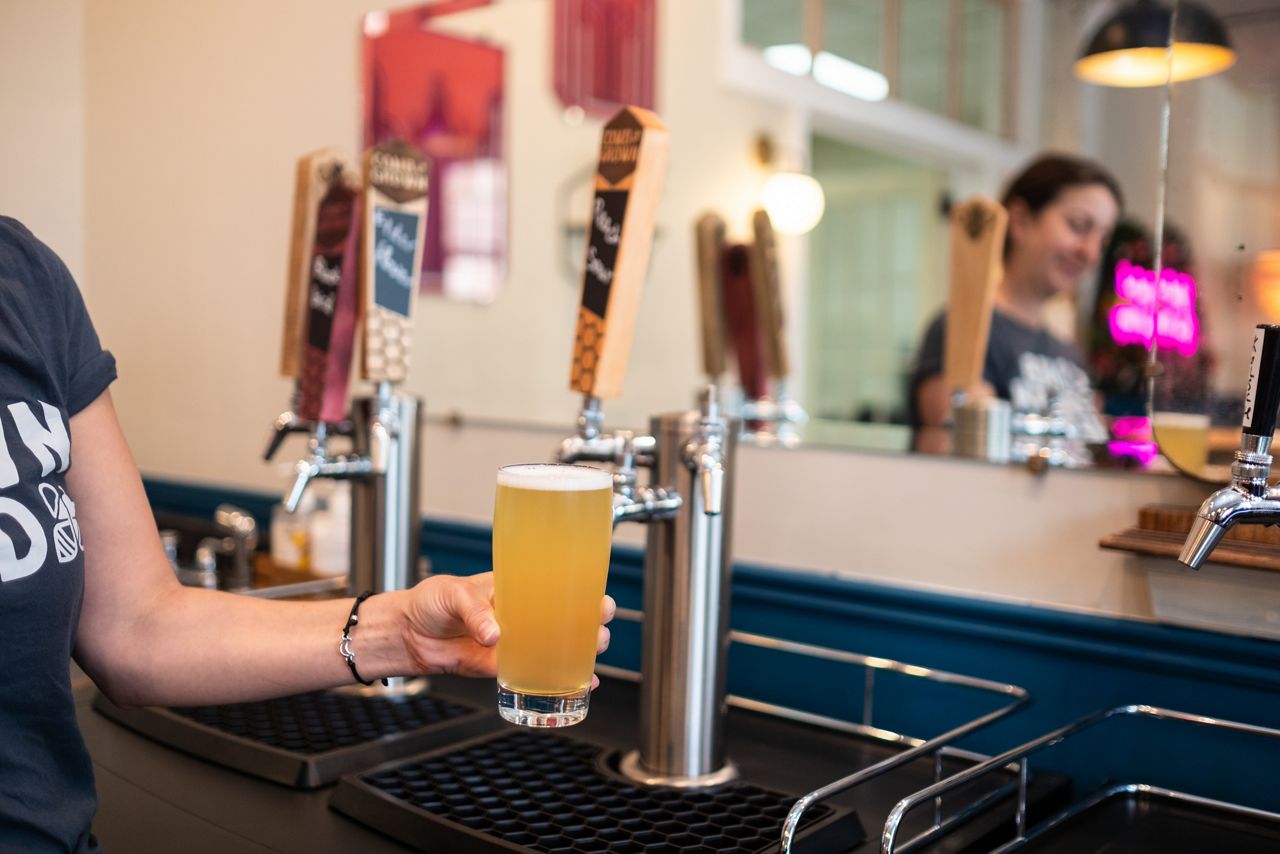
After the fermentation process, the mead has to settle so the sediment can go to the bottom of the fermentation tank.
“You do what’s called racking, which is where you siphon off the yeast and what’s sort of fallen into the bottom of the tank and [then pour it] into another tank to let it settle again. Then we filter our meads a couple of times,” Ferrier said.
The final steps are the most time-consuming in the process: carbonating the mead and canning the final product.
Farm meaderies are required to use 100% New York-produced honey in their products, which gives apiaries a new market.
“I am using all local honey and that’s not an agricultural ingredient that is really being utilized. Breweries may have a beer that has honey in it, but not at the scale that once we really grow. We’ll be using a lot and support a lot of local beekeepers,” Ferrier said.
Women and minorities are largely underrepresented in the craft beverage industry. According to national data from the Brewers Association, 93.5% of brewery owners identified as white and only 23.5% identified as women.
It’s not known exactly how old the beverage is, but it is believed that it pre-dates agriculture, Ferrier said.
